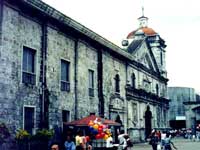
The Basilica Minore de Santo Nino (Basilica of the Holy Child) houses an icon of the infant Jesus. Distinguished as the country's oldest religious relic, it has miraculously survived fire and numerous catastrophes since the Portuguese explorer Ferdinand Magellan first presented it to Queen Juana of Cebu in 1521. The church itself was originally built in 1565, and rebuilt in 1602 after a fire. Its façade is a striking blend of Romanesque, neo-classical and Islamic architecture, while its interior is sumptuously decorated. Visitors will find the Santo Nino in the chapel. They can also purchase souvenirs and religious articles at a small shop, and view church artefacts in a small museum, which is located in the Pilgrim Center's basement.
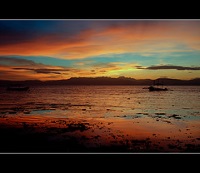
Travellers can easily reach a number of beaches and islets from the Cebu metropolitan area. Mactan Island is one of the best options. It links to Cebu City via a bridge and is home to many resorts, most of which offer full scuba services and watersports facilities. Divers will relish exploring Kansatik's underwater mountain, and should also try Sogod and Moalboal, which are world-renowned dive destinations. Kalanggaman Island and Capitancillo Islet have tremendous coral reefs as well. Travellers should certainly visit Argao's picture-perfect beaches, given that they're only around two hours' drive outside Cebu. Animal lovers can venture to the sea-snake breeding ground, Gato Islet. Travellers should note that while the snakes are not aggressive, they are highly venomous. They should seek immediate attention if bitten. Bird watchers will enjoy Olango Island's pristine white sandy beaches.
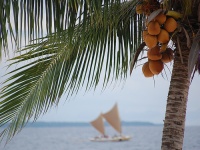
The island province of Bohol lies southeast of Cebu and is one of the loveliest destinations in the Visayas island group. Travellers will find tremendous natural attractions, such as the world's rarest seashells. Animal lovers should look out for the tarsier, which is a huge-eyed, insect-eating monkey. When fully grown, it's roughly the size of a fist. Visitors will also enjoy the world-famous Chocolate Hills. The surreal series of between 1200 and 1800 hills resembles scoops of chocolate ice-cream and is Bohol's greatest natural attraction. The weathering of coral deposits formed it many millennia ago, when the land was still beneath the sea. Otherwise, visitors can look forward to the region's glorious beaches and top-class scuba-diving sites. Indeed, Panglao Island frequently graces lists of the world's top ten diving destinations.
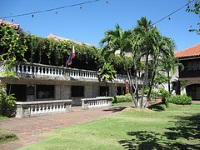
The Casa Gorordo Museum was originally the home of the first Filipino Bishop of Cebu. Four generations of the Gorordo family lived in the house between 1863 and 1979. Today, the restored abode is a recreation of a typical, well-off Filipino home of the mid-to-late 19th century. Its furnishings include paintings, household items, antique furniture, and religious relics. Almost everything is authentic to the period. Most items lack labels, though this actually deepens the sense that visitors are exploring a genuine home, rather than a museum. Guided tours are sometimes available at the museum, but visitors should arrange their own if they'd enjoy a guide's commentary and they want guarantees. That said, just wandering the old house is fascinating. Visitors can buy small souvenirs on site.
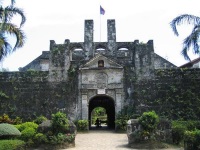
Located in Cebu City's wharf area, Fort San Pedro was the centre of the country's first Spanish settlement. Established in 1565, it began as a single triangular bastion, and was expanded and fortified over the next 200 years. The fort has also served a variety of purposes, seeing use as a watch-tower to counter pirate attacks in the 1700s, a prison for local rebels during the Philippine Revolution, and a US army barracks. Today, the fort has been turned into a museum park, where visitors can encounter the island's history. The small, well-preserved site often hosts cultural events, and student guides are usually on hand to show travellers around and provide background. Tours are free, though tips are appreciated.
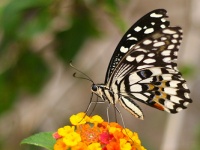
The late lepidopterist, Professor Julian Jumalon, created this private institution, which is part museum, art gallery and miniature nature reserve. It houses his impressive butterfly collection, as well as the art he produced. Visitors usually gravitate towards the collection of unusual mosaics, which are made up of butterfly wings and depict scenes and people from Cebu. That said, the outdoor section is ordinarily rated as the attraction's highlight, where many live specimens flit about. The garden is full of plants that attract butterflies. Some species have been released into the grounds, while others have been bred in captivity. Travellers will find guides on hand. Tours are free, though tips are appreciated.
Website : www.jumalonbutterflysanctuary.com
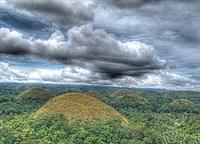
The Chocolate Hills are Bohol Province's most famous tourist attraction, and are widely regarded as one of the top 10 things to see in the country. Nature lovers will enjoy the area's conical hills, which number somewhere between 1200 and 1800. The geological marvels were formed from grass-covered limestone and turn chocolate-brown near the end of the dry season (April or May). At this time, they start to resemble enormous molehills. The UNESCO World Heritage Site is among the most alien landscapes travellers will encounter on earth. An excursion to the Chocolate Hills is a must for anyone on holiday in the Philippines. Travellers should note that climbing up to the viewing platform means scaling a steep stairway, which may be tiring for the unfit or the elderly. It's well worth the effort, though. The hills are particularly lovely in the early morning hours or at sunset.
Website : www.chocolatehills.net

Travel Guide powered by Word Travels, copyright © 2023 Globe Media Ltd. By its very nature information in this travel guide is subject to change at short notice and travellers are urged to verify information on which they're relying with the relevant authorities. Neither Globe Media Ltd nor Travel Vogue can accept any responsibility for any loss or inconvenience to any person as a result of information contained above.